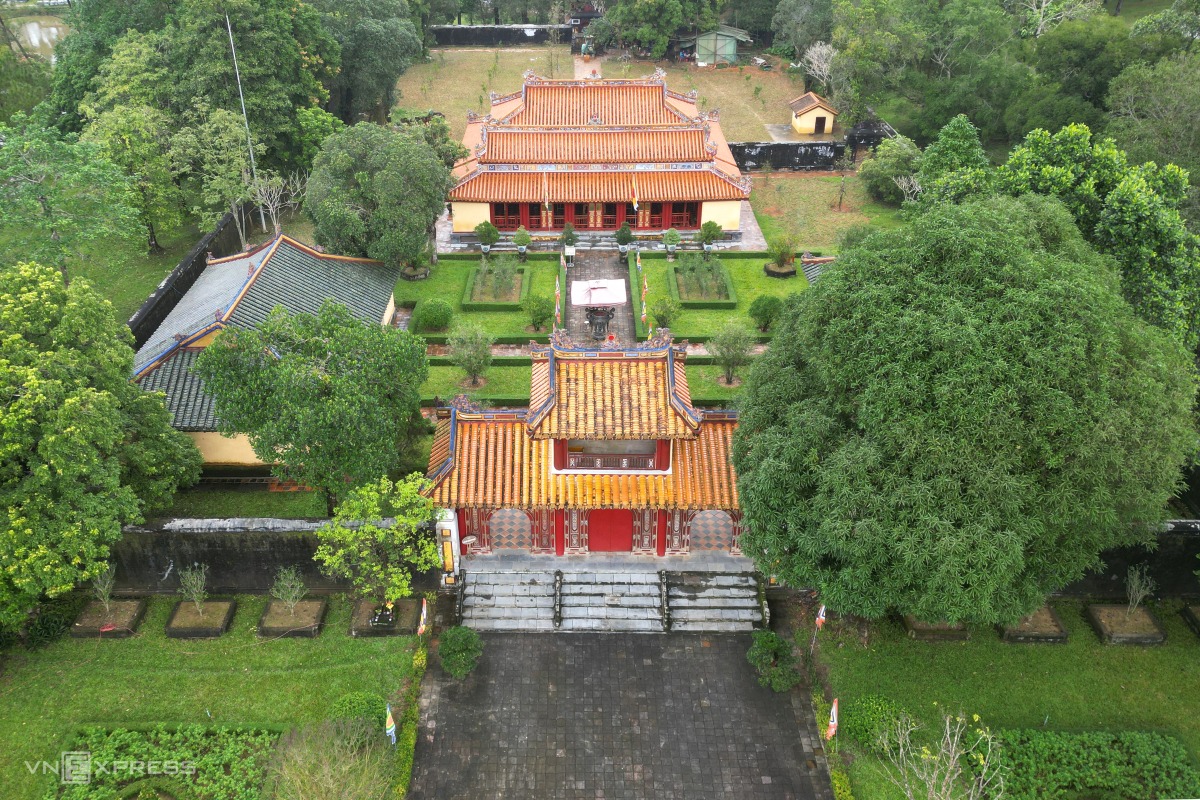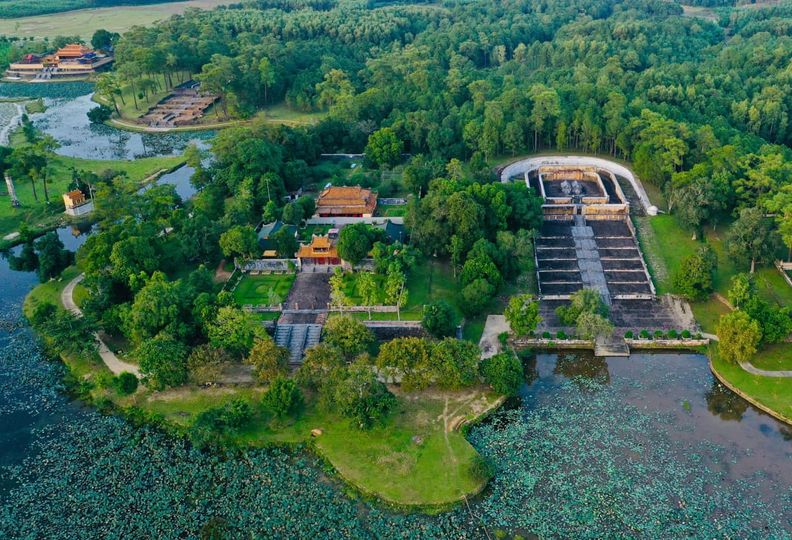Emperor Gia Long's Tomb situated within the picturesque natural landscape of Thiên Thọ Mountain, encapsulates the essence of classical and dignified design. It reflects the architectural styles of the Nguyen Dynasty, combining traditional Vietnamese and imperial Chinese influences. The tomb's layout is meticulously planned, with a majestic entrance gate leading to a serene courtyard. A stone path, flanked by lotus ponds and lush vegetation, guides visitors towards the main monument. The main structure, known as the "Buu Thanh," is a large, square-shaped stone building with intricate carvings and detailed decorations. The tomb is surrounded by a protective wall, and the overall atmosphere is one of tranquility and reverence. The architectural elements, with their classic lines and ornate details, reflect the deep respect and veneration for Emperor Gia Long and his legacy.
Empress Thừa Thiên Cao, whose given name was Lan and whose maiden name was Tống Phúc Lan, was born in 1762, making her the same age as Emperor Gia Long. Just as Gia Long faced the bitter challenges during their exile, she endured them alongside him. Whenever the Tây Sơn rebels posed a threat, causing Emperor Gia Long to flee, she did so as well. Even during their times of exile, she diligently cared for the emperor's mother, protected the royal family, and ensured their well-being, right down to each meal – a testament to the quintessential Vietnamese woman.

During the darkest times, Emperor Gia Long sought refuge in the Siamese court, and he entrusted Empress Thừa Thiên Cao with taking their son, Prince Cảnh, to France to seek foreign support. Before departing, he split a golden nugget in half, giving one part to her and keeping the other, saying, "I am leaving, and one day I will return. We cannot predict when and where we will meet again, so, keep this half as a token of faith."
She patiently awaited his return from Siam. When the emperor finally retook Gia Định, she returned from Phú Quốc island. From then on, she never left his side. On the battlefield, amidst flying bullets, rain-soaked and soiled, she stood with him, providing encouragement and emotional support. The image of Gia Long and Thừa Thiên Cao later came to be compared to the legendary love story of Hạng Vũ and Ngu Cơ from the Han dynasty.
Amidst all the turmoil, she was not just a pillar of moral strength for Emperor Gia Long but also personally wove uniforms for the soldiers. In one battle where the Gia Định forces were losing, she took up a drum and inspired the troops, leading to victory. In 1802, Emperor Gia Long united the nation, and in 1806, she was honored as Empress. At that time, she was 44 years old.
Almost half her life was spent in hardship, experiencing the same trials and tribulations as the man she loved. It was only then that she found solace. There is a small anecdote: one day, the emperor asked her which year a particular piece of gold was from. She brought the gold to him. Overwhelmed with emotion, Emperor Gia Long took half the golden nugget and said, "This gold, preserved through adversity, is a divine blessing during our trying times. We should never forget it. Let's save it for future generations." This piece of gold, later, was enshrined at Điện Phụng Tiên.
After enjoying a short-lived period of glory, Empress Thừa Thiên Cao passed away. The emperor mourned deeply and personally built her tomb, instructing that when he passed away, they should be laid to rest side by side. Two graves lie next to each other, a testament to the shared joys and sorrows of their lives, just as they had supported each other in life. Future generations may have extreme views about Emperor Gia Long's history, but I believe that with her by his side, he was never truly alone.
No matter how bitter, how many setbacks, or how much humiliation Emperor Gia Long faced, she remained steadfast by his side. And even in moments of great power and prestige, he always wanted her to be with him.
When you leave the tomb of Emperor Gia Long, you'll encounter a beautiful, romantic path. The Tomb of Emperor Gia Long is a harmonious blend of historical relics and the pristine nature of Thiên Thọ Mountain. In the distance, you'll find the tomb of Emperor Minh Mạng. Emperor Minh Mạng was not a direct descendant of Emperor Gia Long, but he chose to bury his mother close to his father to show filial piety.
This love story isn't just a beautiful tale; it's also a moral lesson for future generations.

The architecture of Emperor Gia Long's Tomb exudes a solemn and ancient elegance.